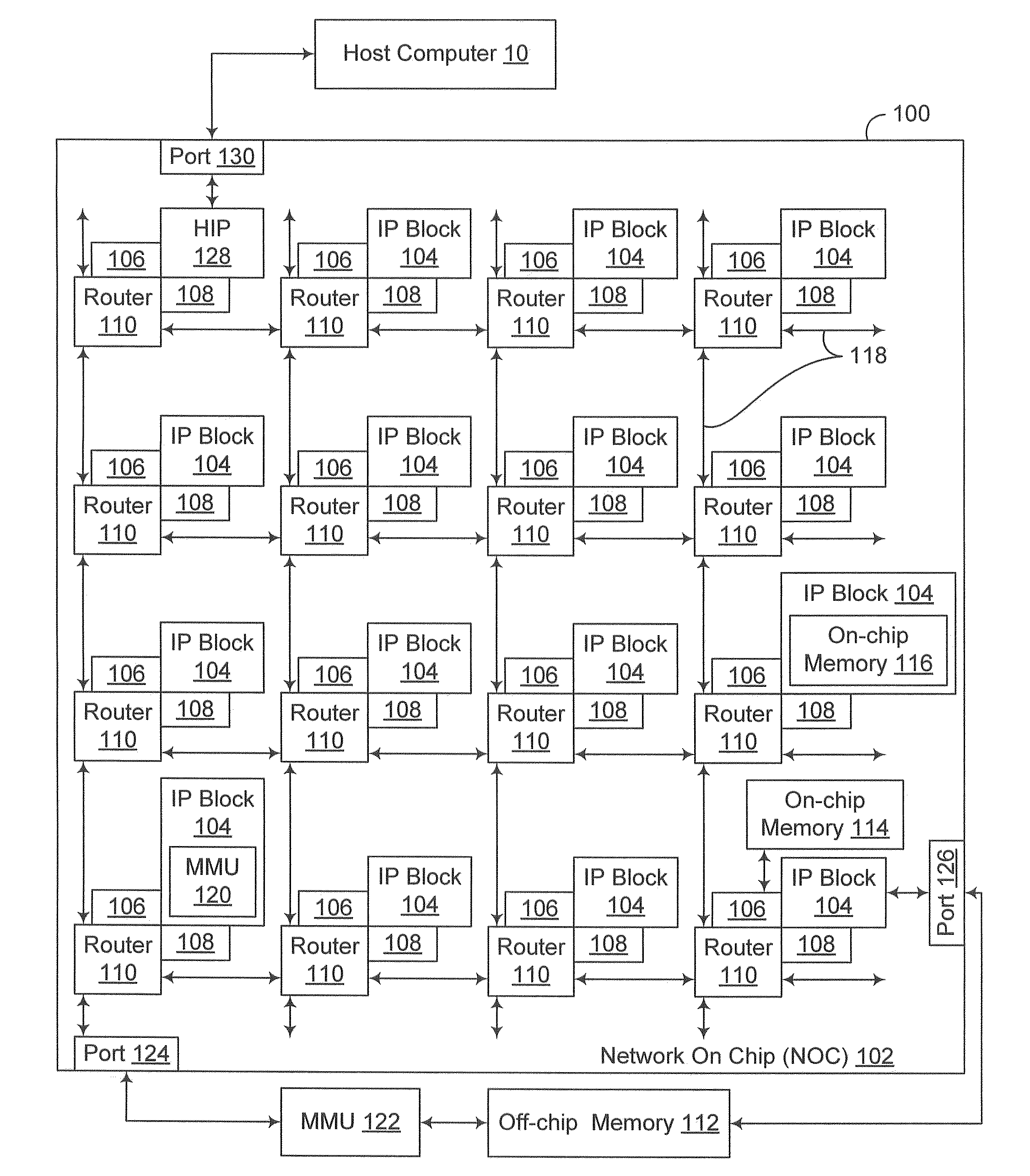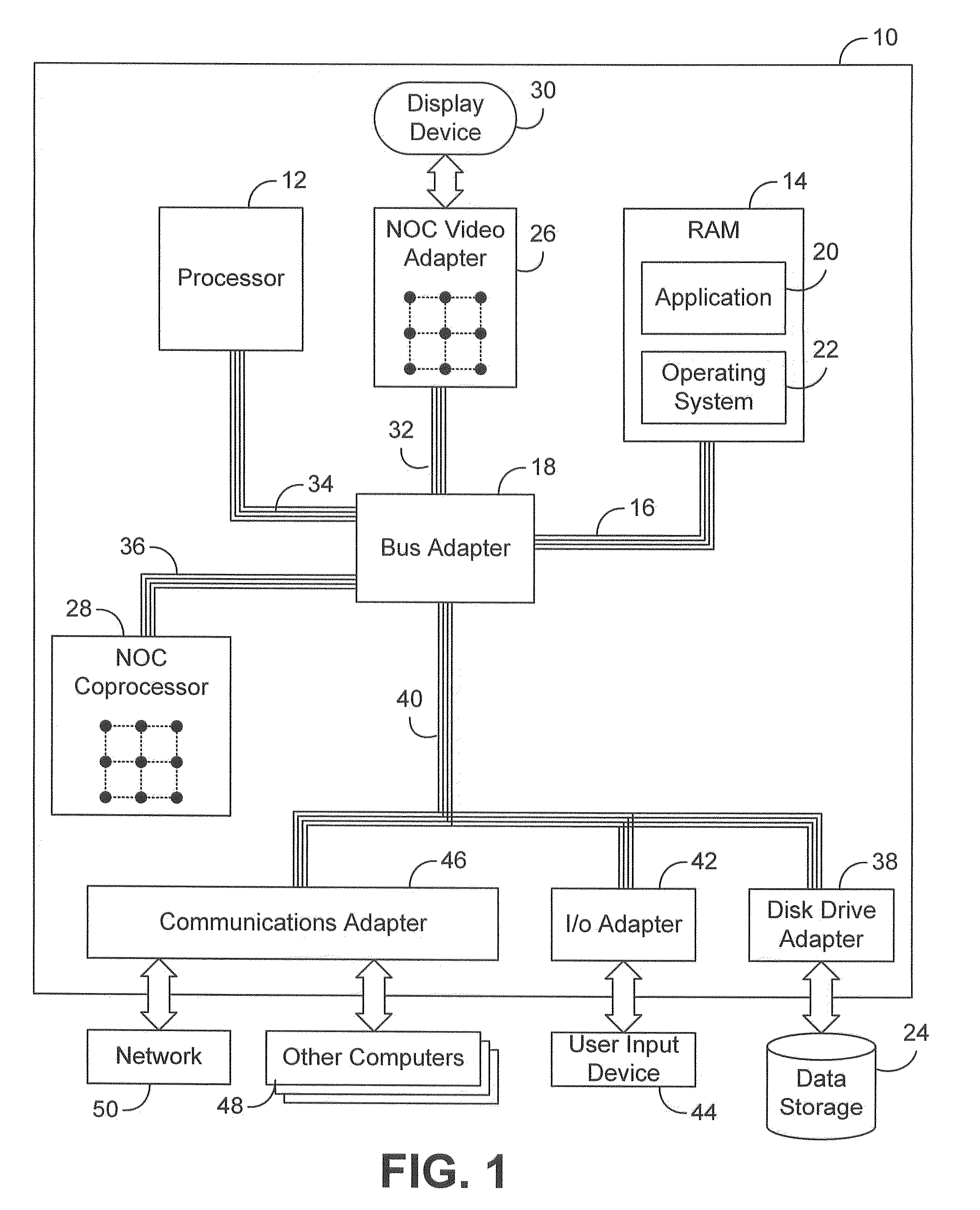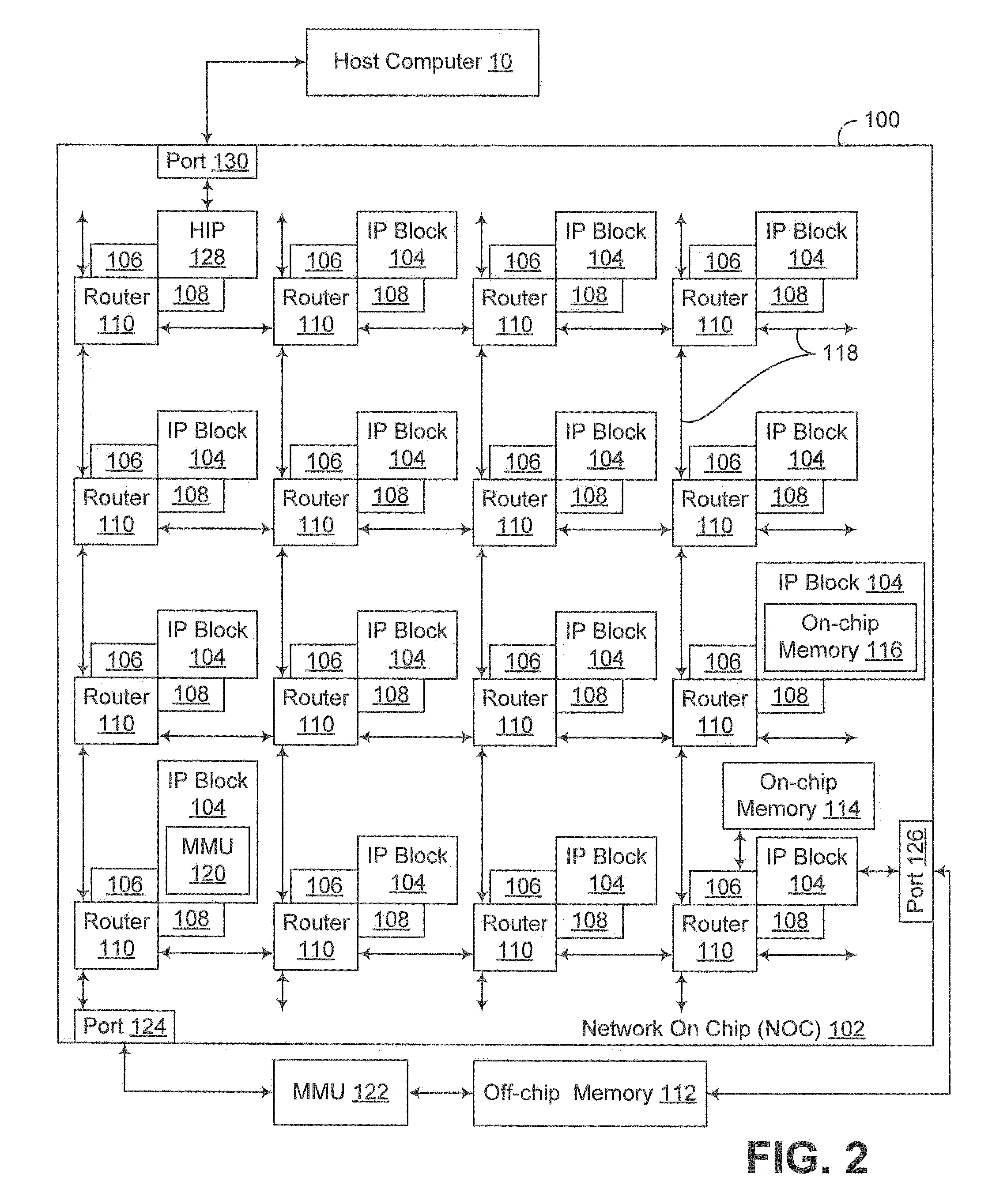Vector register file caching of context data structure for maintaining state data in a multithreaded image processing pipeline
a register file and context data technology, applied in the field of data processing, can solve the problems of low computational power, rasterization suffers from several drawbacks, and modern monitors display images, so as to minimize memory bus utilization, reduce memory overhead, and optimize access
- Summary
- Abstract
- Description
- Claims
- Application Information
AI Technical Summary
Benefits of technology
Problems solved by technology
Method used
Image
Examples
Embodiment Construction
[0034]Embodiments consistent with the invention cache frequently accessed state data used in a multithreaded graphics processing architecture within a vector register file of a processing unit to optimize accesses to the state data and minimize memory bus utilization associated therewith. By doing so, the consumption of memory bandwidth between processing units and caches and lower level memories in association with retrieving and / or storing state data can be significantly reduced.
[0035]In embodiments consistent with the invention, a processing unit utilized in a multithreaded graphics processing architecture includes a fixed point execution unit with one or more general purpose registers coupled to a vector execution unit, e.g., a vector floating point unit, with a vector register file. State data is cached within one or more vector registers in the vector register file, and transferred as needed to one or more general purpose registers for use by the fixed point execution unit. As...
PUM
 Login to View More
Login to View More Abstract
Description
Claims
Application Information
 Login to View More
Login to View More - R&D
- Intellectual Property
- Life Sciences
- Materials
- Tech Scout
- Unparalleled Data Quality
- Higher Quality Content
- 60% Fewer Hallucinations
Browse by: Latest US Patents, China's latest patents, Technical Efficacy Thesaurus, Application Domain, Technology Topic, Popular Technical Reports.
© 2025 PatSnap. All rights reserved.Legal|Privacy policy|Modern Slavery Act Transparency Statement|Sitemap|About US| Contact US: help@patsnap.com



